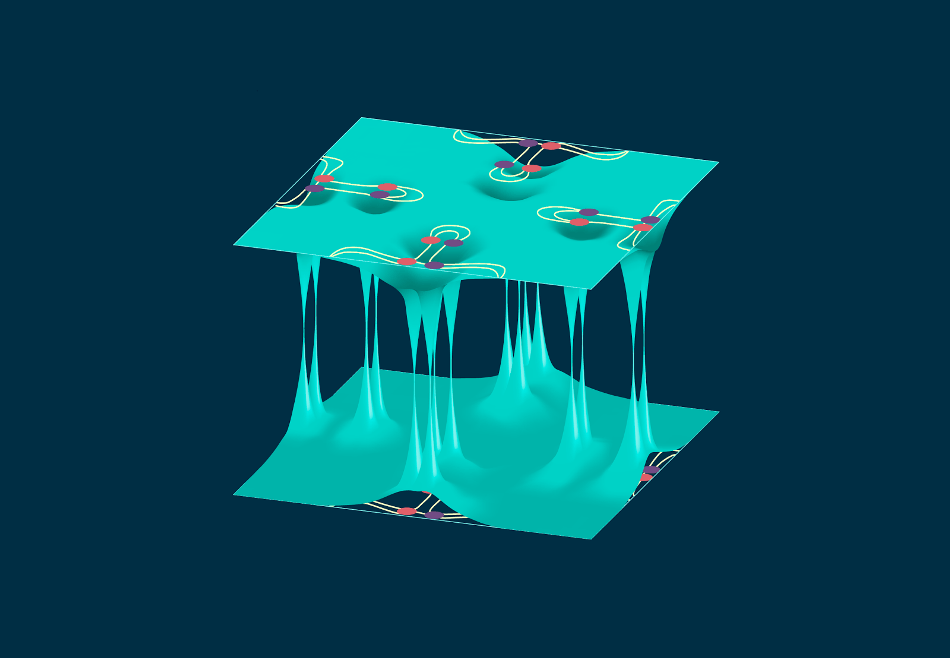Apr 28 2017
The behavior of Weyl particles trapped on the surface of Weyl semimetals has been examined by MIPT researchers. Their study was featured in the renowned Rapid Communications section of Physical Review В.
 The bulk electron spectrum in a Weyl semimetal is described by a set of an even number of Weyl cones (aka valleys) centered at special points in the momentum space. These conical points, which are sometimes called “diabolical,” conceal nontrivial topology. Credit: MIPT
The bulk electron spectrum in a Weyl semimetal is described by a set of an even number of Weyl cones (aka valleys) centered at special points in the momentum space. These conical points, which are sometimes called “diabolical,” conceal nontrivial topology. Credit: MIPT
In the early 20th century, the existence of the Weyl particle, that is, the Weyl fermion, was proposed by the German physicist Hermann Weyl. Regardless of the early prediction and stupendous attempts in searching for the imaginary Weyl particle, it could be experimentally discovered only in the year 2015. The particle was observed in tiny crystals, in contrast to the expectations that it will be observed in a giant collider. The tiny crystals were known as Weyl semimetals. Since then, these materials have been analyzed much, rendering the research area one of the most significant in modern physics.
Weyl semimetals can be considered to be a 3D equivalent of graphene, which is a 2D crystal discovered by MIPT graduates Andre Geim and Konstantin Novoselov, and has distinctive characteristics. In the year 2010, Andre Geim and Konstantin Novoselov were awarded the Nobel Prize in physics for their achievement. Similar to photons, electrons in Weyl semimetals as well as graphene act as massless particles. Yet in contrast to photons, these particles possess an electric charge, rendering them favorable for electronic applications. The strange characteristics of electrons in such materials and various similar materials can be described by means of the topological field theory. It is worthy of mention that the Nobel Prize in physics for the year 2016 was awarded to researchers who introduced topological ideas into condensed state physics.
Zhanna Devizorova, a PhD student from MIPT, performed a theoretical study headed by MIPT Prof. Vladimir Volkov, to analyze surface states of Weyl fermions, or the manner in which electrons act near the surface of a Weyl semimetal crystal. These electronic surface states, that is, special states of electrons at the surface of a crystal, were proposed in the 1930s by later Nobel Prize winners Igor Tamm (USSR) and William Shockley (USA). They predicted and analyzed the first theoretical models of such states. Yet, researchers have shown an interest in the surface states only recently. The practical importance of this research area is indicated by the actuality that modern microelectronics involving silicon are invariably based on near-surface conducting channels. Yet, silicon is not a topological material in itself.
The dispersion law, relating the energy of a particle to its momentum, governs the behavior of the particle in an external field. The dispersion law states that the electronic properties of crystals (e.g. conductivity) are defined by the energy spectrum of the electrons in it. In the case of electrons in a Weyl semimetal, their bulk energy spectrum is defined by a set of an even number of Weyl cones, that is, valleys, centered on distinctive points in the momentum space.
In such crystals, the surface exhibits exceptional characteristics. Weyl semimetals stand apart due to the peculiar energy spectrum of particles inhabiting their surface states. In such striking spectra, the curves representing states that have equal energy are nonclosed and resemble arcs, or the so-called Fermi arcs, on two-dimensional momentum space. The Fermi arcs connect electron spectrum points belonging to disparate Weyl cones. In contrast to Weyl fermions, ordinary electrons exhibit closed Fermi curves that resemble a circle. Till date, the theoretical explanations related to Fermi arcs have been dependent on obscure and complex first-principles computer calculations. The researchers based at the MIPT have derived the boundary conditions that successfully account for intervalley interactions on semimetal surface by capitalizing on the reality that Weyl fermions positioned distant to the crystal’s surface obey Weyl’s differential equations. By making use of the derived boundary conditions, they solved the Weyl’s equations for two valleys “by hand”, thus analytically discovering the Fermi arcs’ shape. Practically, the researchers provided a qualitative and quantitative description of experimentally derived data and ascertained that formation of the Fermi arcs is chiefly governed by the intense intervalley interaction due to Weyl fermion scattering on crystal surface.
It can be proposed that Weyl semimetals have the ability to allow ultrafast electronics. At present, theoretical researchers are investigating the principles that form the basis of next-generation electronic devices formed of Weyl semimetals. The MIPT researchers’ analytical approach is a comparatively effortless method for elucidating the impact of magnetic and electric fields on Weyl fermions. The heuristic capacity of this approach can significantly enable advancement to highly efficient and faster electronics.